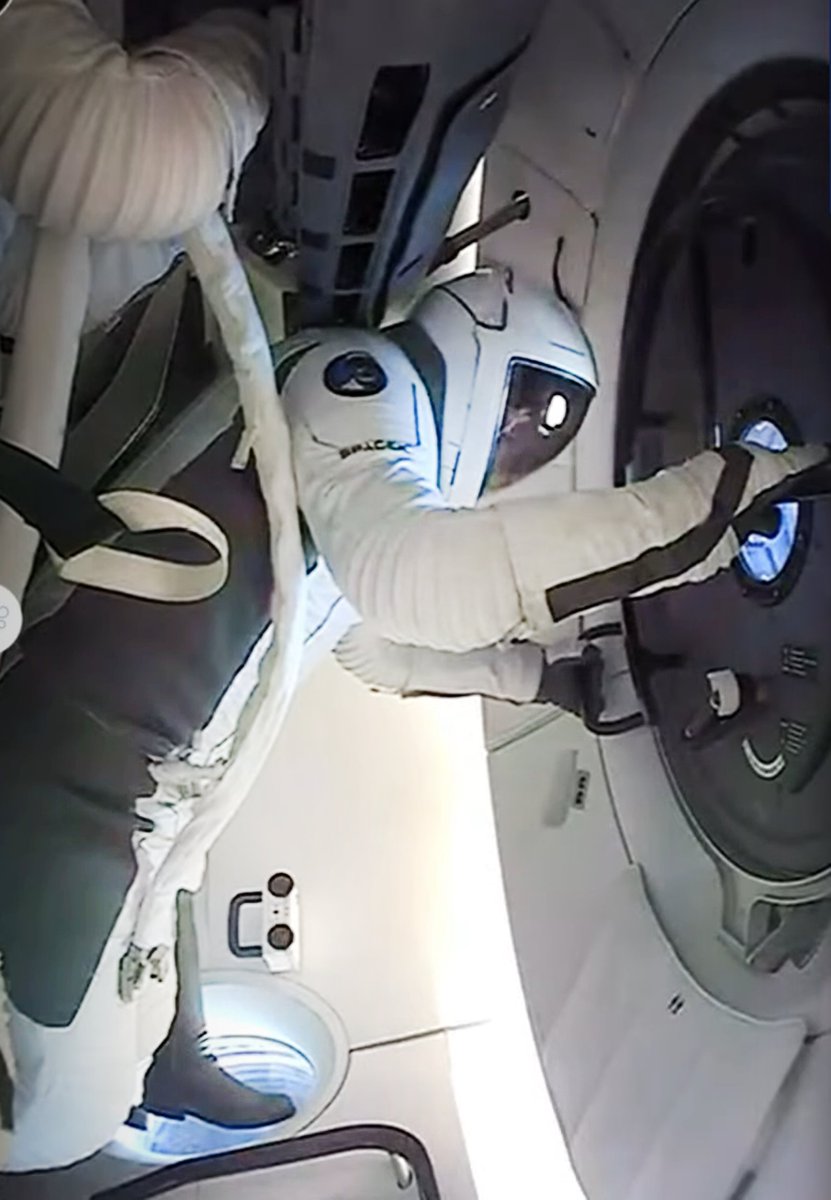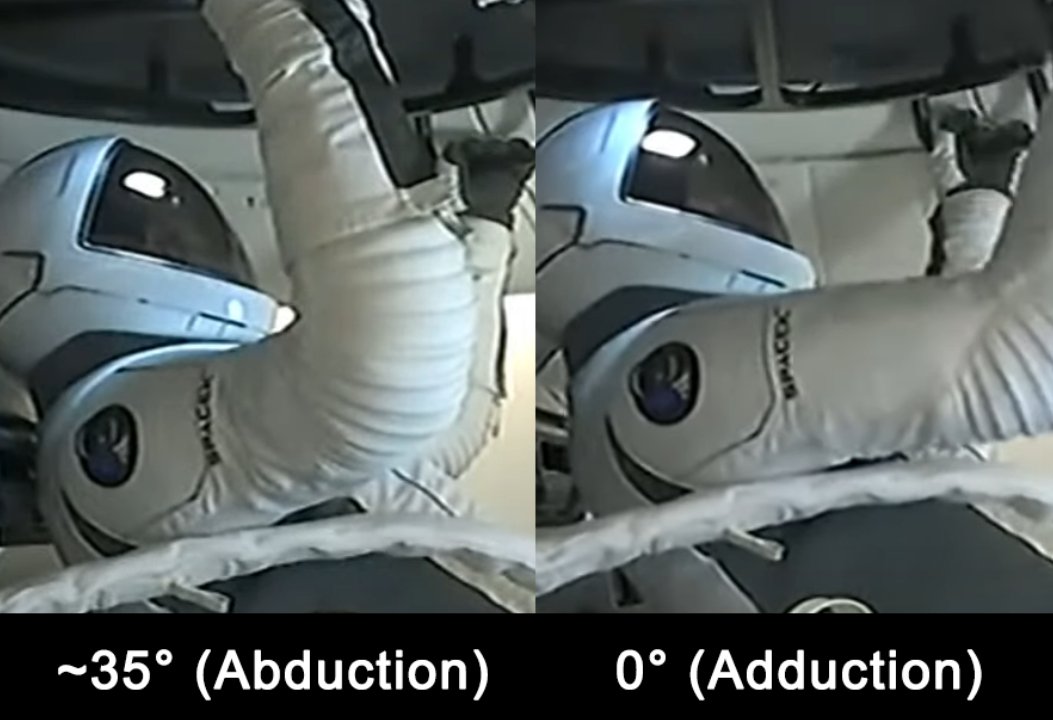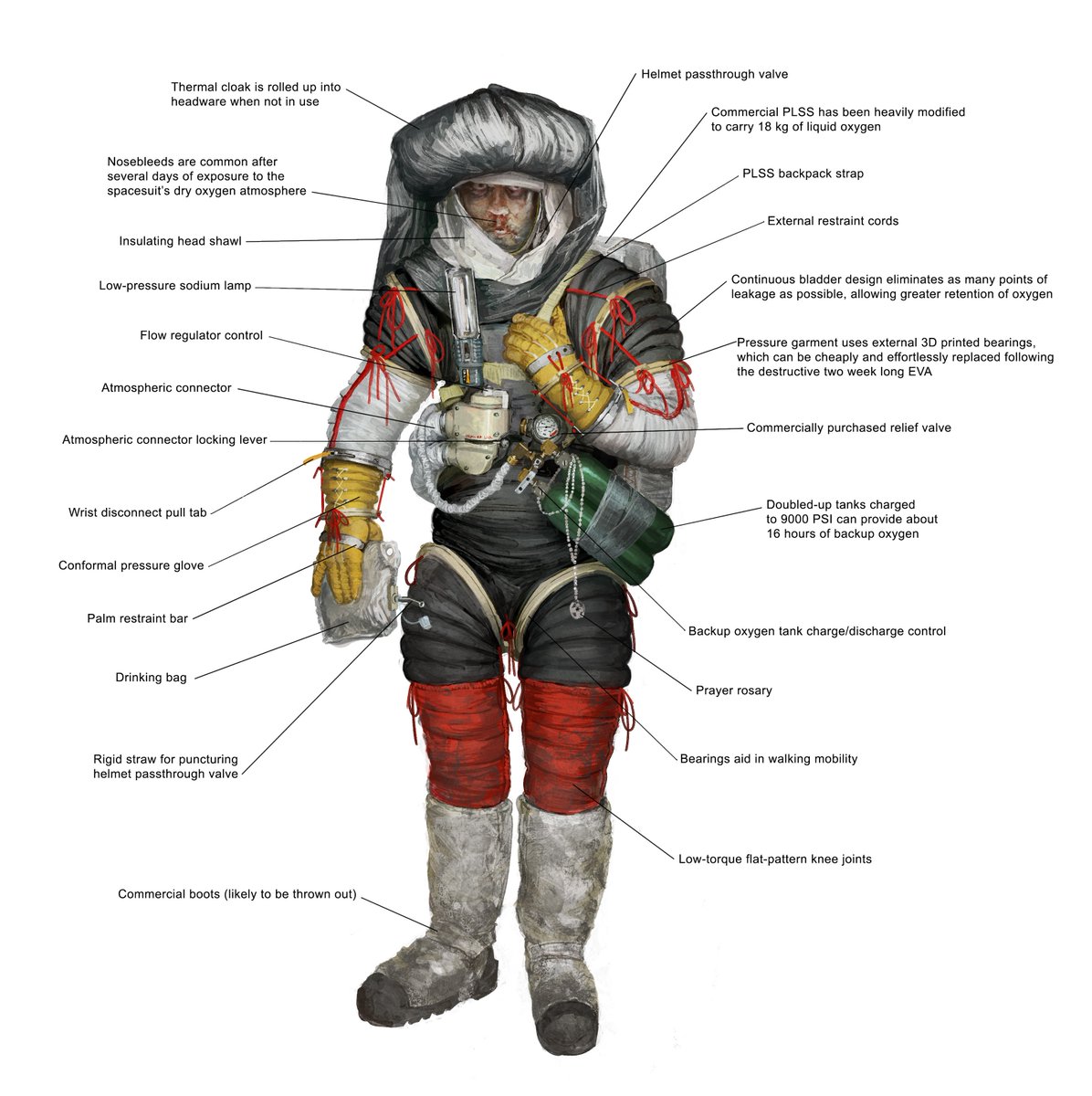At long last, the Polaris Dawn spacewalk has been accomplished. Now I can study the videos from the spacewalk (and also from some promo material) to learn more about the design and functionality of SpaceX's new EVA suit! In this thread I will share my findings.. 

Lets get the obvious things out of the way: the elbow joints. Clearly these are a typical single-plane convolute, as evidenced by the ridges protruding through the elastic TMG of the suit. They appear to possess some slight deflection mobility (like a Sokol).


I was surprised by the degree of mobility put into arm ab/adduction. It seems they've put a single-plane joint which gives about 35-ish degrees of mobility right under the shoulder cone. I also suspect there are some rigid elements at play here (more on that later..)


The semi-rigid bearing in the shoulder did exactly what we expected it to do. I still have no friggin idea how it works. Anyways, I noticed that it never exceeded ~90 degrees (not that it was ever necessary to) but I wonder if this is a hint to how it works (continuous bladder?)




Also, maybe I'm blind or crazy, but I swear the scye (shoulder) bearings are actually elliptical, not circular.. This would be possible considering the bearings aren't rigid metal circles, they're... well, we still don't know what they are. Gooey plastic? Point is, they're bendy. 

As for those rigid elements I mentioned, I'm convinced that the stylish trimness of the shoulders is afforded by a rigid form (a la shoulder cones of the SPD-117). I also suspect that, given the consistent axis and odd protrusions, there is another such element for arm abduction.




As for entry config, one of the promo videos actually shows the "spiral zippers" they alluded to in May. These appear to wrap around the chest (going underneath the shoulders), akin to a Mk IV, only more vertically shortened. We also see how the TMG is closed over the entry path.




I noticed that the gloves would, strangely, stay at crooked angles. It doesn't make sense for Jared/Sarah to be straining to maintain such a pose. My suspicion is that the gloves are dual-stable (or just "sticky"), using a sliding restraint system similar to early Apollo gloves.






Oh yes, and leg mobility... well they didn't really use their legs much, so I don't have all that much to say. Evidently there are single-plane joints (convolutes) in the knees, and presumably *something* in the hips. I noticed some strange protuberances here but that's about it. 

Anyhow, I think that's about all I have to share for now. I'm sure there's plenty that I've missed, and even more that ought to have been said. So please feel free to share your own thoughts and findings!
• • •
Missing some Tweet in this thread? You can try to
force a refresh










